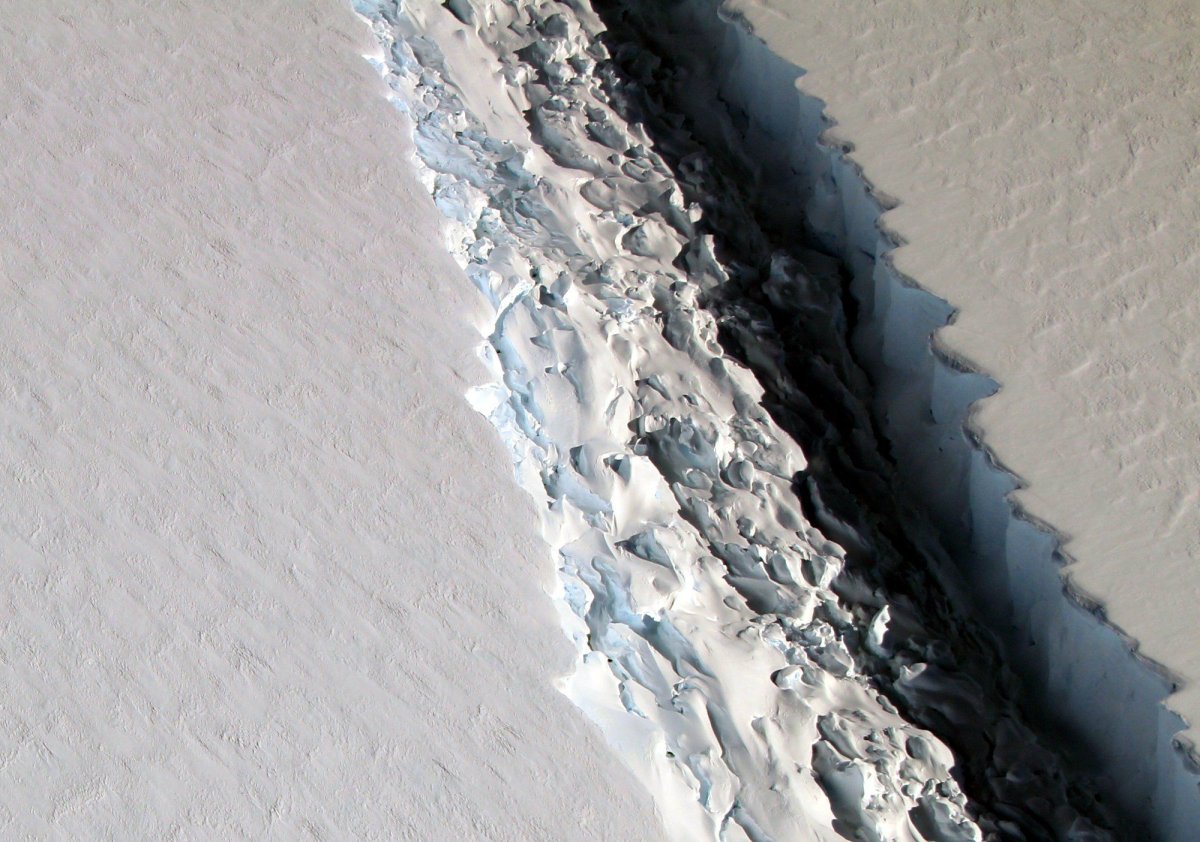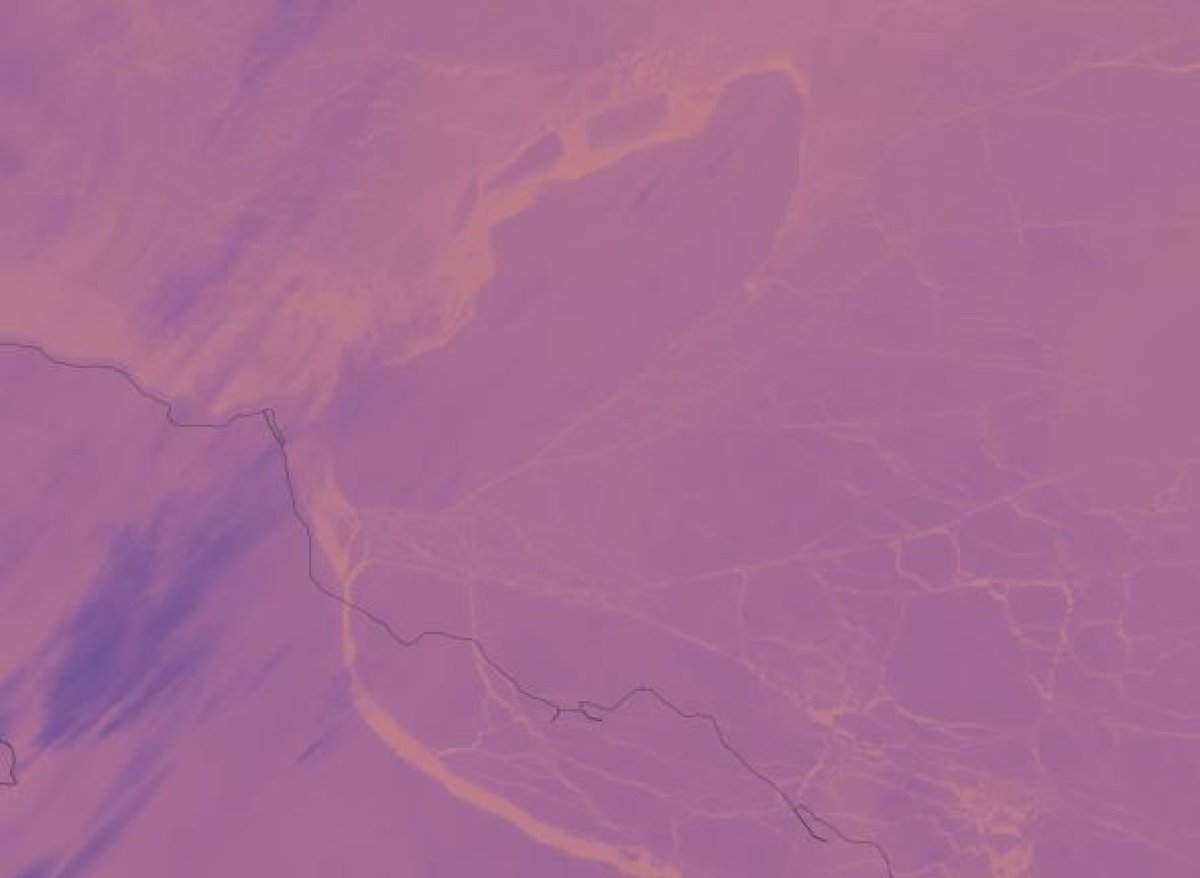In July 2017, a vast trillion-ton iceberg, referred to as A-68, broke off from Antarctica's Larsen C Ice Shelf, causing quite a stir in the media.
Over the next year, A-68—which is the size of Delaware—stayed in roughly the same place, probably because it became stuck in the seabed of the Weddell Sea off the Antarctic coast, according to polar oceanographer Mark Brandon from the Open University in London.
But new data shows that, in the last couple of months, the iceberg has started to rotate with great force.
"It has a spectacular amount of momentum, and it's not going to be stopped easily," Brandon wrote in a blog post.
The new findings come from temperature imagery gathered by the Sentinel-1 SAR and Suomi NPP satellites, which are helping to illuminate the iceberg's movements in the dark of the Antarctic winter.
"It is the middle of the Antarctic winter and nobody is on the ground looking at this," Brandon told Newsweek. "The light has come back to the part of Antarctica where the iceberg is—but it is still very cold. That means we only have satellite data."
"There are two basic types we can use. One images the ice—but the iceberg is often obscured by clouds," he said. "The other type is a radar sensor. The European Space Agency Satellite Sentinel-1 has one of these radars and the advantage is the iceberg can be measured through clouds. This means we can track it very accurately."
He said that false-color imagery from July 7 to 12 shows how the iceberg began swinging northward.
"Around the 12th July 2018 it seems to have broken free from what it was grounded on and began rotating in an anticlockwise direction," he said. "Over the rest of July and August it has rotated a little more than 90 degrees. It appears to be grounded at its western end and so it is rotating around that."

Understanding why the rotation began is tricky, but weather conditions and ocean currents likely played a role. In fact, data from the Larsen C Automatic Weather Station highlights a period of unusual weather that may have had an influence, according to Brandon.
Shortly before the iceberg started to rotate, wind speeds in the region dropped to their calmest levels in 2018, while air temperatures also fell below -40 degrees Celsius (-40 degrees Fahrenheit) before rising to above 0°C (32°F) just a few days later.
Brandon predicts that the iceberg—which is the fifth biggest to originate from Antarctica in recorded history, measuring 5,800 square kilometers (2,239 square miles)—will likely continue rotating around its western edge and collide with the Larsen C Ice shelf.
"If it carries on rotating at the same rate, this could take as little as a month or two," he said. "If it grounds again—we don't know the seafloor depths in the region very well because ships have never been there—it could stick for another year or longer."
"If A-68 does collide with the Larsen C Ice Shelf, it will be slow, and there won't be explosions or anything," he said. "But I would expect the forces within the ice to break iceberg A-68 into smaller, but still huge, fragments. It is possible it could fracture the ice of the ice shelf. The satellite imagery when this happens will be magnificent and it will allow us to learn a lot about how the ice fractures and moves."

Brandon thinks that, ultimately, the iceberg and its fragments will drift northwards to the edge of the Weddell Sea, which forms the southernmost point of the Atlantic Ocean.
"We can't estimate how long that will take, but it is likely it will take years as the icebergs will ground again," he said. "Once they leave the sea ice and edge of the Weddell Sea they will drift northeast and only have a few of months left in existence."
"The larger fragments of the berg will almost certainly drift towards the Antarctic Island of South Georgia and ground on the shelf there to decay."
Uncommon Knowledge
Newsweek is committed to challenging conventional wisdom and finding connections in the search for common ground.
Newsweek is committed to challenging conventional wisdom and finding connections in the search for common ground.
About the writer
Aristos is a Newsweek science reporter with the London, U.K., bureau. He reports on science and health topics, including; animal, ... Read more
To read how Newsweek uses AI as a newsroom tool, Click here.








